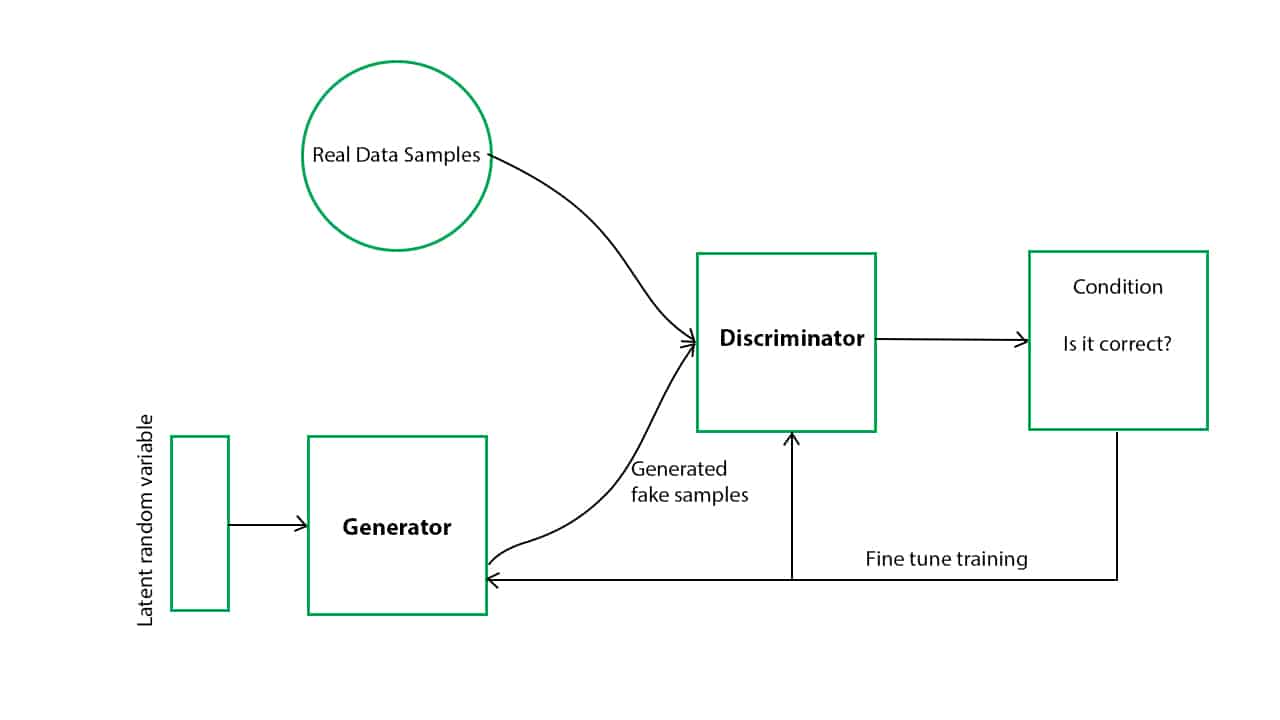Generative Adversarial Networks (GANs) are a special class of artificial intelligence (AI) algorithms used in unsupervised machine learning, implemented by a system of two neural networks competing against each other. A GAN is composed of a generative model, which creates synthetic data based on a given input, and a discriminative model, which determines whether the generated data is real or not.
GANs are used in a variety of applications, primarily in image synthesis, text-to-image conversion, video analysis, and more recently in autonomous vehicles. One of the most powerful applications is the creation of realistic images of people, objects, and scenes that don’t actually exist. GANs help to interpret visually complex settings, driving object and gesture recognition, and can even predict future frames in video content.
GANs were first developed in 2014 by computer scientists Ian Goodfellow, Jean Pouget-Abadie, Mehdi Mirza, Bing Xu, David Warde-Farley, Sherjil Ozair, Aaron Courville, and Yoshua Bengio, who combined generative modeling with deep learning techniques. It was intended to train models without labels or supervision by having two competing models that act as adversaries.
The generative model is tasked to capture the data distribution of a training set better than its discriminative counterpart. The discriminative model takes the samples from the generative model and determines whether they are real or not. The two models are trained concurrently to improve each other and both models progressively improve their performance until they reach an equilibrium.
GANs are powerful tools that can learn complex mappings and generate new data points. As the technology continues to advance, GANs have the potential to become a valuable tool in the fields of computer vision, natural language processing, data analytics, and more.






